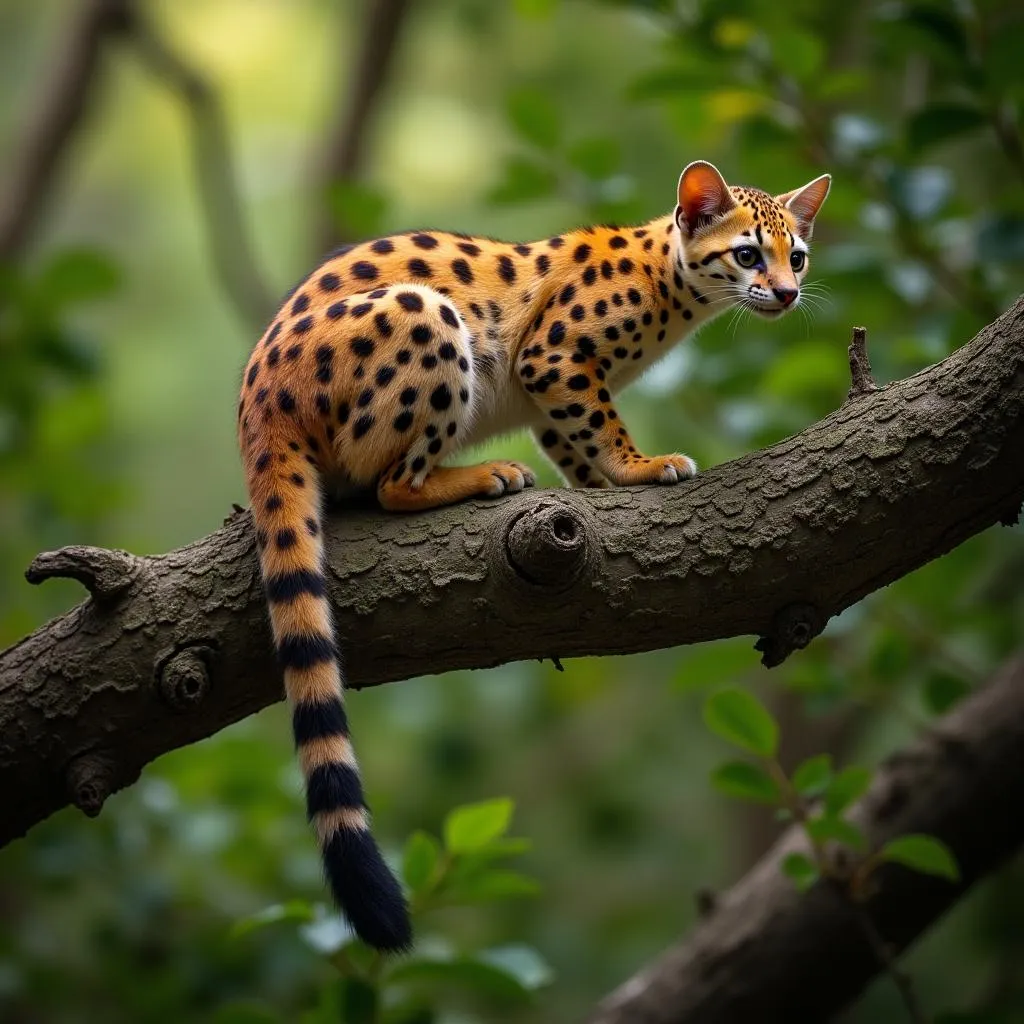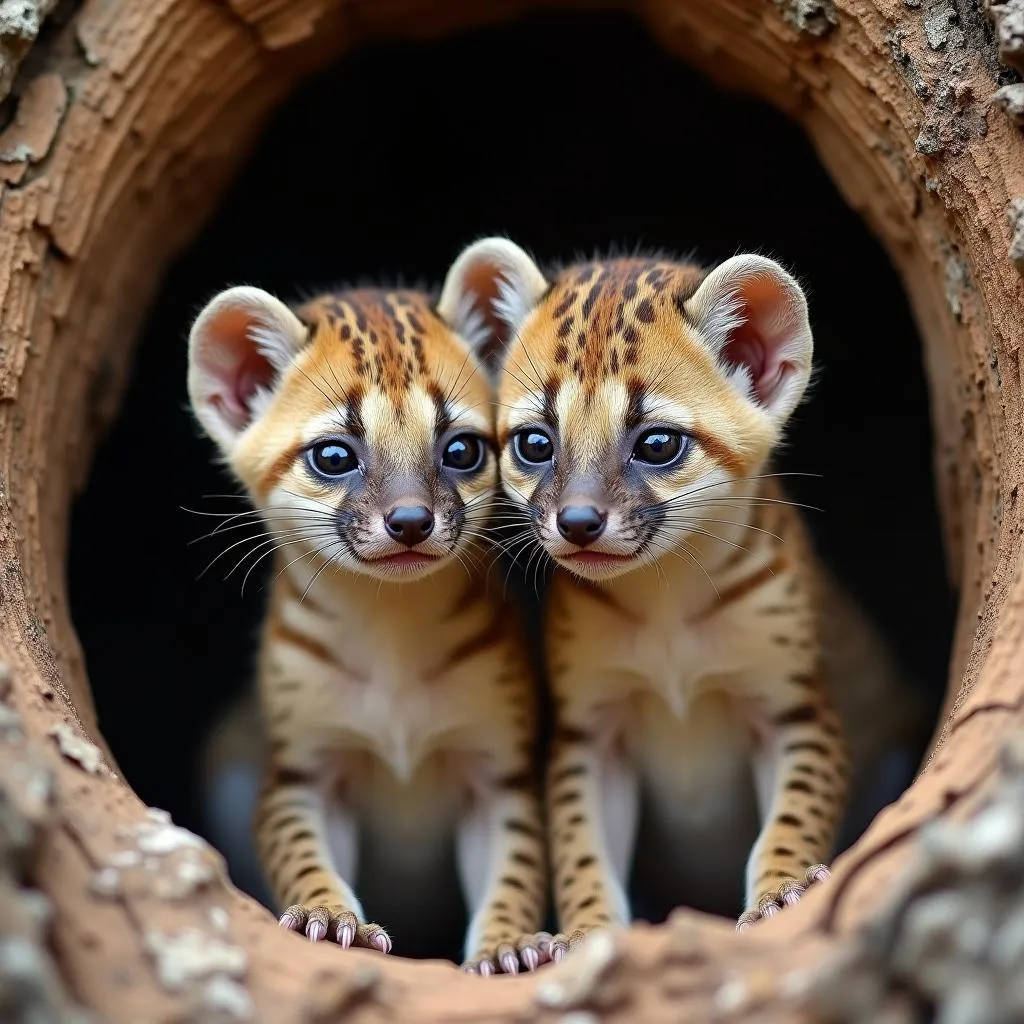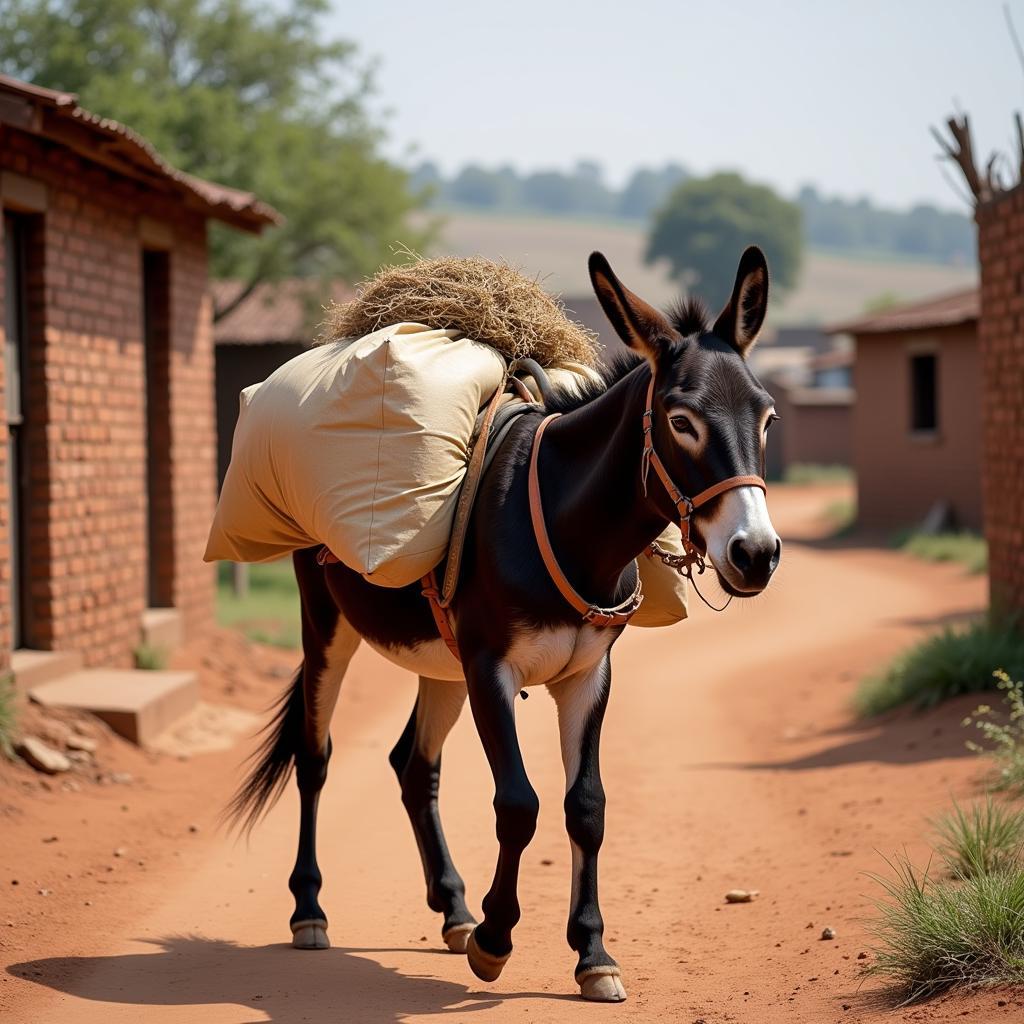The Alluring African Genet: A Closer Look
The African Genet, a captivating creature often mistaken for a feline, holds a unique place in the tapestry of African wildlife. These small, slender carnivores, scientifically classified as belonging to the Genetta genus, are a testament to the continent’s incredible biodiversity.
 African Genet in its Natural Habitat
African Genet in its Natural Habitat
Unveiling the Mystique: Appearance and Habitat
African genets are easily recognizable by their striking coats adorned with black spots and stripes against a pale grey or yellowish background. This natural camouflage helps them blend seamlessly into their surroundings, making them elusive masters of stealth. Their long, bushy tails, often longer than their bodies, add to their elegant appearance and provide balance as they navigate their arboreal domain.
Found primarily in sub-Saharan Africa, African genets thrive in a variety of habitats, including forests, woodlands, and even areas with human settlements. Their adaptability is a testament to their resilience and resourcefulness. These nocturnal creatures are rarely seen during the day, preferring to spend their time resting in tree hollows or abandoned burrows.
A Hunter’s Instinct: Diet and Behavior
As skilled hunters, African genets rely on a combination of agility, keen senses, and sharp claws to secure their prey. Their diet consists mainly of rodents, birds, reptiles, insects, and even fruits. Their nocturnal habits give them a competitive edge, allowing them to exploit food sources unavailable to diurnal predators.
african-genet-hunting-prey|African Genet on the Hunt|An action shot of an African genet in mid-leap, pouncing on a small rodent in the undergrowth. The image captures the genet’s hunting prowess and agility.
African genets are solitary creatures, except during mating season. They communicate with each other through a variety of vocalizations, including chirps, hisses, and purrs, as well as scent marking using their anal glands.
The African Genet and its Role in the Ecosystem
As an integral part of the African ecosystem, the African genet plays a crucial role in maintaining a healthy balance within its habitat. By controlling rodent populations, they help regulate agricultural pests, indirectly benefiting human communities. Their presence also contributes to the overall biodiversity of the region, enriching the intricate web of life that sustains the African wilderness.
Conservation Status and Challenges
While the African genet is currently listed as a species of Least Concern by the International Union for Conservation of Nature (IUCN), their populations are facing increasing pressure from habitat loss, degradation, and hunting. Deforestation and human encroachment on their natural habitats pose significant threats to their long-term survival.
Delving Deeper: Interesting Facts about African Genets
- Despite their feline appearance, African genets are more closely related to mongooses and civets.
- They are incredibly agile climbers, able to rotate their hind feet 180 degrees, allowing them to descend trees headfirst.
- African genets have excellent night vision, which aids them in their nocturnal hunting expeditions.
- In some cultures, African genets are kept as pets, valued for their ability to control rodents.
 African Genet Cubs
African Genet Cubs
Conclusion
The African genet, with its captivating beauty and elusive nature, stands as a testament to the incredible diversity of African wildlife. Understanding and appreciating these remarkable creatures is essential for ensuring their continued existence in the face of mounting ecological challenges. By promoting conservation efforts and raising awareness about their importance, we can contribute to safeguarding the future of this enigmatic African icon.



